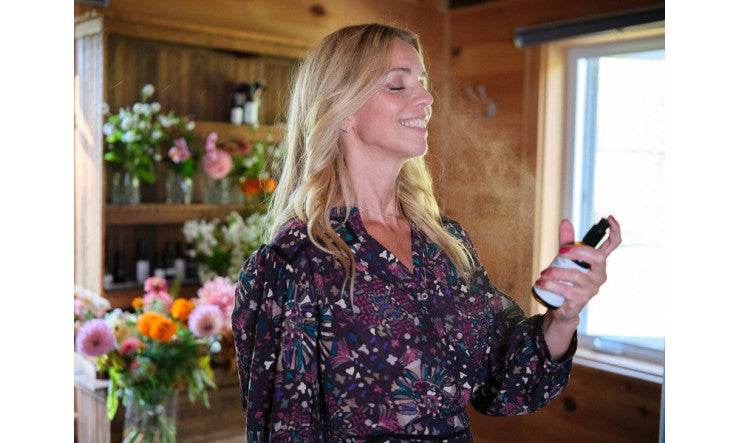Danièle Starenkyj
Author and international speaker
Young city dwellers, fresh out of university, we had chosen simplicity, and we found ourselves on a plot of land in the eighth row of a small village in the county of Bellechasse.
Pumping water by hand, bringing in armfuls of wood, and heating an old royal Bélanger stove... Listening to the silence. Smiling at the stars. Walking in the wind. Marveling at the sight of a moose. Dreaming of a large garden... and putting in the sweat of our brow.
Our first decision for this garden was to use plant material to fertilize it. We bought a shredder and shredded piles of maple leaves, which we buried in our soil. The results amazed our neighbors. The entire row began gardening. Life had returned to this remote corner.
Time passes. In the course of my research, I discover the phenomenal face of my little doctor. Its astonishing action in detoxification, intoxications, poisonings, drug addictions, and so much more… Yes, its veterinary use, but also agricultural. An initial article published in 1959 in the journal Nature discusses the insecticidal effect of this pure carbon powder. I delve deeper. There is talk of its ability to decontaminate soils of herbicides. It is called: "the universal absorbent agent of the majority of herbicides." It is discovered that it improves plant growth by adsorbing growth inhibitors, preventing the growth of unwanted calluses, promoting morphogenesis, and improving root development. It is declared excellent for growing vines, roses, and particularly orchids.
BUT... the most extraordinary thing was his presentation at the 2009 Copenhagen conference, which included him on the agenda of strategies to reduce greenhouse gases... My little doctor, crowned in the 21st century, ecological "carbon sink" and "powerful lever" to limit climate change, was acclaimed as a solution to the global warming of our planet.
Indeed, buried in the ground, charcoal – yes, it's my little doctor about to become a prodigious doctor – traps and stores carbon from the atmosphere over the long term -- CO2, methane, nitrous oxide (N2O) --.
According to Professor Lehman of Cornell University (USA), using coal to improve soils in our world could rid us of one to two billion tons of carbon per year. And this, while nourishing our soils, improving our crops, and allowing us to replace nitrogen fertilizers (1).
Okay, I'll stop there. No sooner said than done. For three years, this time in the Eastern Townships, we've been gardening with leaves and powdered charcoal. The results are simply breathtaking. It's the new green! While we wait for its universal recognition, the ancient charcoal—that's right, 3,500 years ago, it was already used to preserve mummies, fence posts, and drinking water reserves—still presents us with the same face: that of grace...

- All the references, and much more, can be found in Danièle Starenkyj's book My Little Doctor, new revised and expanded edition, Orion, 2012.




































































Leave a comment